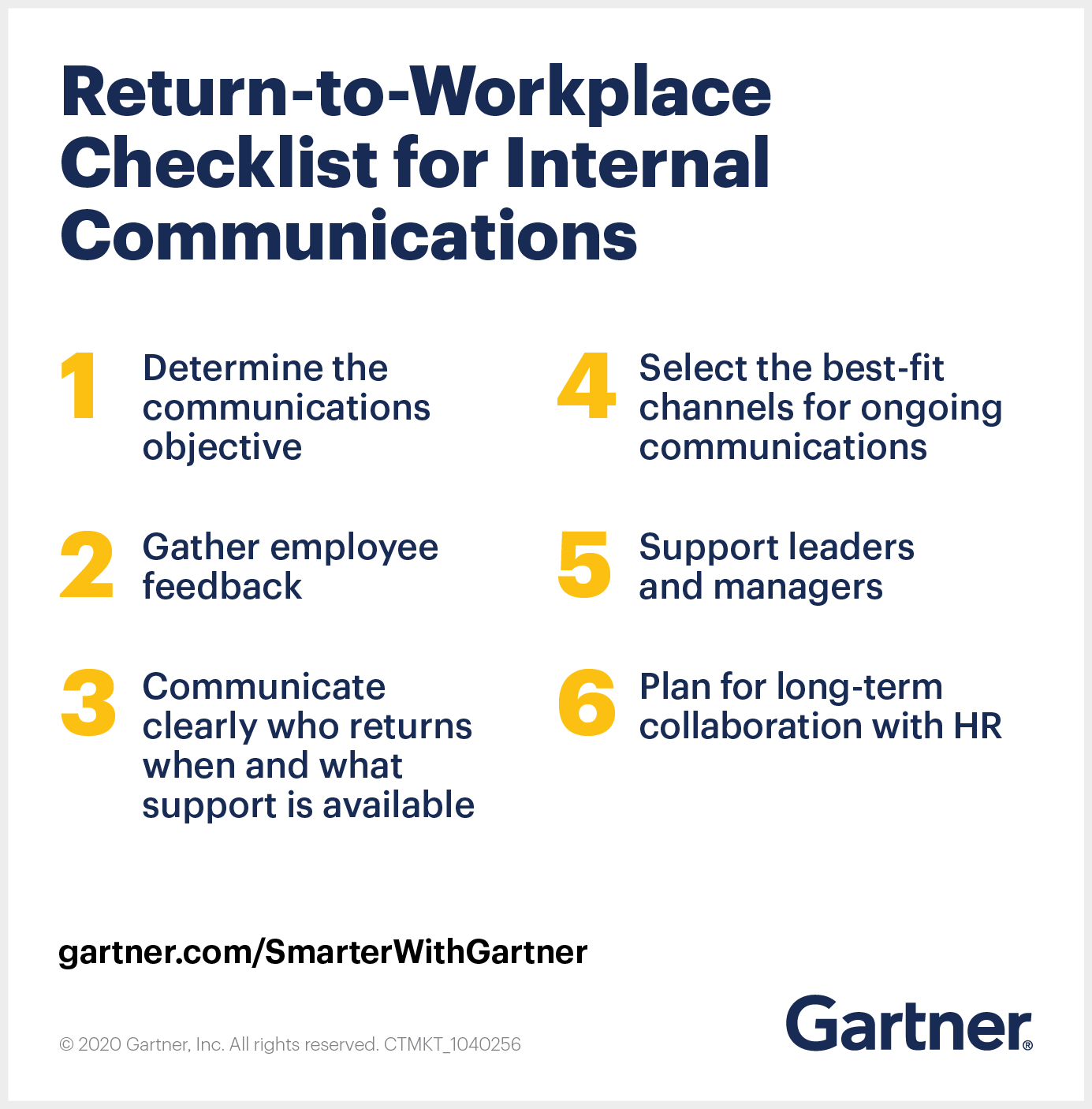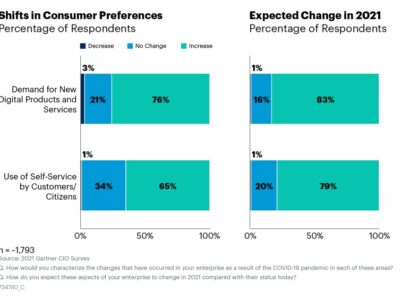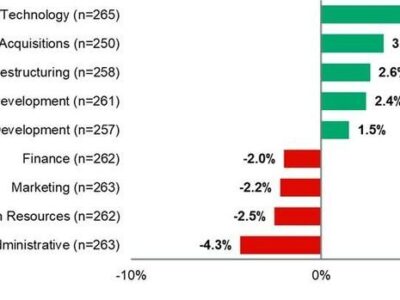Contributor: Jackie Wiles
As organizations bring more employees back to the workplace, internal communications leaders must be in lockstep with HR on health and safety.
As COVID-19 pandemic infection rates ebb and flow, more organizations are bringing employees back to the workplace — or at least offering them that option. Internal communications has a critical role to play, partnering closely with human resources to plan and communicate new return-to-workplace policies and procedures to employees.
“Coordination is key,” says Abigail Blair, Sr Specialist, Advisory, Gartner. “You need to determine whether the communications or HR team should own specific messages and associated activities, but ultimately you’re working together to ensure the safety of employees and support business operations.”
Here are six actions for internal comms to take to be an effective partner to HR; ensure employee health and safety are communicated consistently and effectively; and support employees as they return.
No. 1. Determine the communications objective
In planning conversations with HR, internal communications must specifically define their target audience for the information they’re disseminating. For example, if the intended outcome or action aligns with the strategic goals of communications but not HR (e.g., aligning employees to a new corporate strategy), comms should own the activities that will drive success against that goal.
No. 2. Gather employee feedback
Partner with HR leaders to gather employee feedback that will inform the decisions about return-to-the-workplace policies, including who will return and when, what kinds of accommodations will be available in the workplace and what employees need from the organization to manage the transition.
Internal communications leaders are critically positioned to represent the employee perspective before, during and after employees return to the workplace. They should work with HR to gauge employee sentiment through pulse surveys, focus groups and other employee networks, such as employee resource groups (ERGs).
Make sure the feedback is designed to provide insights that actually help drive decision making. Avoid questions that will result in answers and actions over which the organization has no control.

No. 3. Communicate clearly who returns when and what support is available
Make sure to communicate promptly and clearly which employees may return to the office, and when. This directive usually concludes that employees who need to be in the office to perform tasks critical to their job function will return first. Remember that there will be a wide range of employee sentiment around returning to the office.
Clearly communicate what resources exist around employee mental health, preventive health and financial well-being, and how to access them. Work with HR to support employee well-being throughout the process.
Warn employees of the possibility that they may need to return to remote working with short notice. Prepare messages, alongside HR and IT, to be shared with employees if a future workplace closure becomes necessary to ensure information is quickly disseminated.
Continue to make remote work best practices available, and support on-site employees in connecting and collaborating with their remote-working peers.Executive
Streamline Strategic Planning for Disrupted Times
Quick guide for functional leaders on how to focus only on what’s necessary and sufficient for a strategic plan.Download eBook
Read more: 9 Tips for Managing Remote Employees
No. 4. Select the best-fit channels for ongoing communications
Select the right channel(s) to relay return-to-workplace messages to ensure employees receive the information and understand what is expected of them throughout the transition. Make sure information can get to employees who may lack regular access to certain channels, such as the company intranet. Help HR determine the best channel mix to support all employees.
Utilize all appropriate channels to communicate regularly and widely to ensure employees understand why measures are being taken, what sources informed those decisions, what they will be expected to do differently and where they can go for help. Work with HR to make sure all messages reinforce the most up-to-date policies and regional guidelines.
Leverage multimedia such as video to clarify for employees what to expect (e.g., “a day in the workplace”), model desired behaviors (e.g., mask-wearing, physical distancing), and to answer common questions like, “How often is the office space cleaned?” “How will team meetings account for social distancing protocols?” and “Where will I eat my lunch in the office?”
Many organizations are reopening different offices in a phased approach, which calls for internal comms and HR to work together to cascade corporate decisions and identify local partners who can provide additional context that accounts for regional guidelines. Regional communicators, HR business partners and on-site leaders are common choices to provide context for return-to-workplace messages for local offices.
Read more: Select the Right Communications Channels for Deskless Employees
No. 5. Support leaders and managers with return-to-workplace guidance
Work with HR to create leader- and manager-specific resources to help them contextualize information for their teams. It’s the local leaders and managers who set cultural norms for employees returning to the workplace, hold employees accountable for following health and safety procedures, and have to manage team stress resulting from changes.
Start by developing communication tools for managers and regional leaders to use. Work with HR to develop FAQs, templates and additional resources to promote consistent delivery across the organization and help leaders manage employees’ expectations, questions and pushback. Also encourage leaders and managers to personalize organizationwide plans and messages, helping employees understand “what this means for me.”
Also work with HR to establish an escalation point for questions that regional leaders and managers have (on behalf of employees). This escalation point can be a designated individual on the return-to-workplace committee or an inbox managed by the HR or communications team. The goal is to take the burden off local leaders regarding difficult decisions or negative feedback from employees.
No. 6. Plan for long-term collaboration with HR
As your internal communications team partners with HR to create a cohesive messaging strategy around the return to the workplace, use the opportunity to create a long-term partnership between the two functions. The strategies for communicating return-to-workplace protocols in partnership with HR translate into activities that comms leaders can sustain over the long term.
Continue to identify shared objectives with HR to prioritize initiatives for collaboration, and share responsibility for gathering employee feedback, as the data can inform both comms and HR strategies. Also coordinate message cadence, volume and content to avoid misinformation or duplication of efforts.










